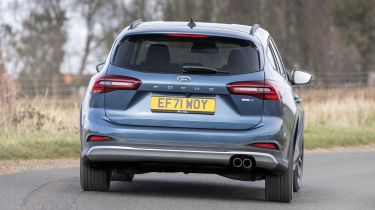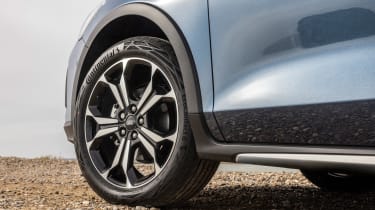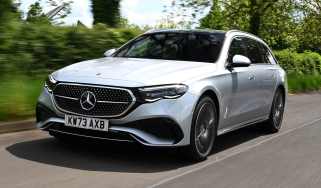Ford Focus Estate - MPG, running costs & CO2
A range of efficient engines means the Focus Estate should be inexpensive to run, although a hybrid option would boost appeal
Ford’s award-winning 1.0-litre EcoBoost petrol engine now features cylinder deactivation – the first time this technology has appeared in a three-cylinder engine. It means that when you don’t need much power, the engine runs on two of its cylinders and burns less fuel until you need to accelerate or drive up a hill. From mid-2020, two versions of the 1.0-litre engine got mild-hybrid technology to reduce their emissions and boost fuel economy figures.
Innovations like this, as well as reduced weight and a slippery shape, mean the Focus Estate is even close to full-hybrids in terms of keeping running costs low. Being a Ford, it should also be reasonable to maintain, but lower residual values than models from more desirable badges can have an impact on monthly payments.
Ford Focus Estate MPG & CO2
Fuel-saving technology in the 1.0-litre EcoBoost petrol engine means it can return almost 55mpg in 124bhp and 153bhp models, with emissions starting from 116g/km. For company-car drivers, this means a healthy Benefit-in-Kind (BiK) tax band, although business users will pay less tax on a hybrid or plug-in hybrid estate car like the Toyota Corolla Touring Sports or Kia Ceed Sportswagon PHEV.
While a diesel engine is more expensive to buy initially, drivers with a very high annual mileage could see cost savings thanks to 62.8mpg from the 1.5-litre EcoBlue. CO2 emissions are similar to that of the petrol models, but business users will be subject to a higher BiK rating as a result of the penalty for diesels.
More reviews
Every Ford Focus Estate is liable for the standard rate in annual VED (road tax).
Insurance
The influx of new safety technology like standard autonomous emergency braking appears to have been viewed favourably by the Association of British Insurers (ABI). The Focus Estate sits in broadly the same groups as its predecessor. An entry-level petrol model is in group 11, while the fast ST model with a petrol engine occupies group 34. The previous entry-level model offered low insurance costs thanks to a group-eight ranking, but it’s no longer available. The 123bhp petrol in Trend trim sits in group 12, while a sporty ST-Line grade with more power sits in group 17. Every diesel model slots into either group 12 or 13 out of 50.
Servicing
Ford has the largest network of dealers and authorised workshops of any car manufacturer in the UK, and this is one reason its cars are so popular. It also means routine maintenance ought to be relatively convenient, with a workshop in most big towns. Annual servicing is required, or every 12,500 miles if the latter occurs first.
Your Ford dealer can arrange a service contract that takes your annual mileage into account, and this can make it easier to manage running costs. Consumable parts such as tyres and brake components are all readily available, and this helps to keep costs down – even the biggest 18-inch tyres are of a size and specification that's also used by many rival cars.
Warranty
Every Ford sold in the UK has a three-year/60,000-mile warranty, which can be extended to four or five years at extra cost. A year's roadside assistance is included, too, but this warranty package is now overshadowed by those from Hyundai, Kia and Toyota – 10 years or 100,000 miles in the case of the latter.
Which Is Best?
Cheapest
- Name1.0 EcoBoost Hybrid mHEV ST-Line 5dr
- Gearbox typeManual
- RRP£30,490
Most Economical
- Name1.0 EcoBoost Hybrid mHEV ST-Line 5dr
- Gearbox typeManual
- RRP£30,490
Fastest
- Name1.0 EcoBoost Hybrid mHEV 155 ST-Line 5dr Auto
- Gearbox typeAuto
- RRP£32,340












